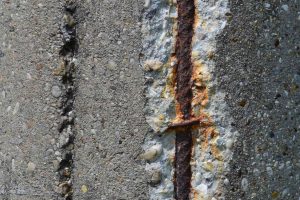If you are looking into GPR, you probably have numerous questions about its capabilities. You probably want to know what it can offer your endeavors. What can it do, how well can it do it, and what are the limitations of it? Can it be used to detect numerous materials, and how well does it do with rebar detection? Read on to have all of your burning questions about GPR and rebar detection answered so you can make smart and informed decisions.
What Is GPR?
GPR, or ground penetrating radar, is used to create a 3D image of the materials in or beneath a concrete surface. It allows you to identify a wide range of underlying issues without doing excessive invasive damage to the concrete itself. It is effective at locating post tension cables, wire mesh, conduits, dowel bars, tie in bars, radiant heat tubes, and more. However it can not always be used for rebar detection.
What Is Rebar Detection?
Glass reinforced polymers are a clever alternative to steel, which can reinforce concrete structures without posing the numerous problems that steel does. Rebar is non-toxic, stronger than steel, has a low carbon footprint, does not conduct electricity and heat, and is easy to install. They have a long lifespan and are corrosion resistant, unlike steel. Steel gets bigger and bigger as it corrodes, which puts unnatural pressure on the concrete structures it supports and can cause them to break within over time. In fact, the corrosion of steel supports within structures is one of the biggest causes of infrastructure degradation. While rebar solves this problem, it also cannot be detected by GPR because of its makeup. Non-metallic objects are tricky to locate via GPR.
Do you need help with gpr from Concrete Visions?
Concrete Visions has over 12 years of experience and expertise in concrete scanning and we know how to detect any problems lurking beneath the surface. We use ground penetrating radar accurately and expertly and are familiar in many other methods that can be used when appropriate like concrete x-ray and electromagnetic conductivity. We are also very familiar with the latest construction safety techniques and train all of our workers to do their work quickly, accurately, and safely. If you would like to learn more about how we can help you, give is a call at (410) 766-2210 or visit us online. For more articles and tips, follow us on Facebook, Twitter, LinkedIn, and Google+.

